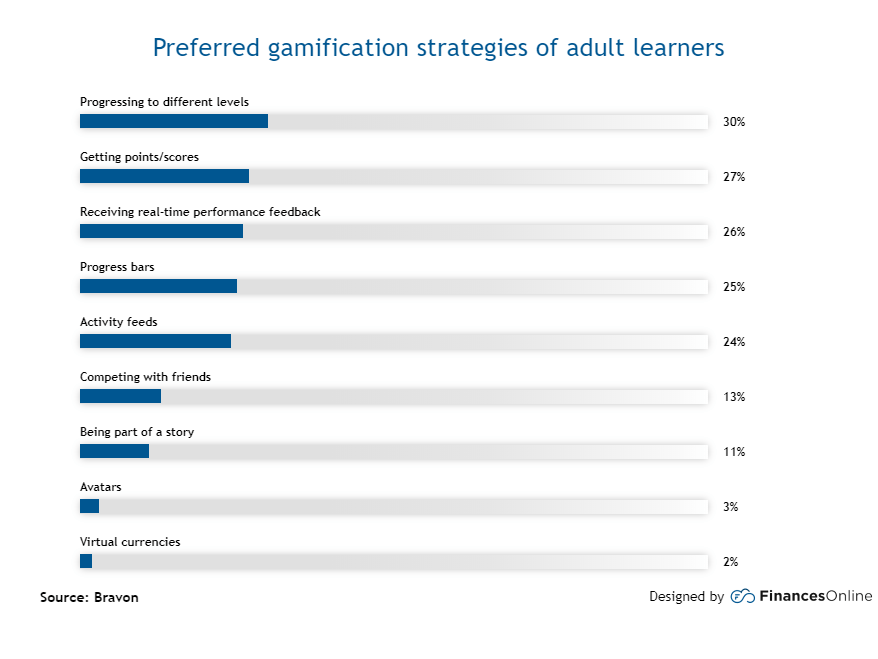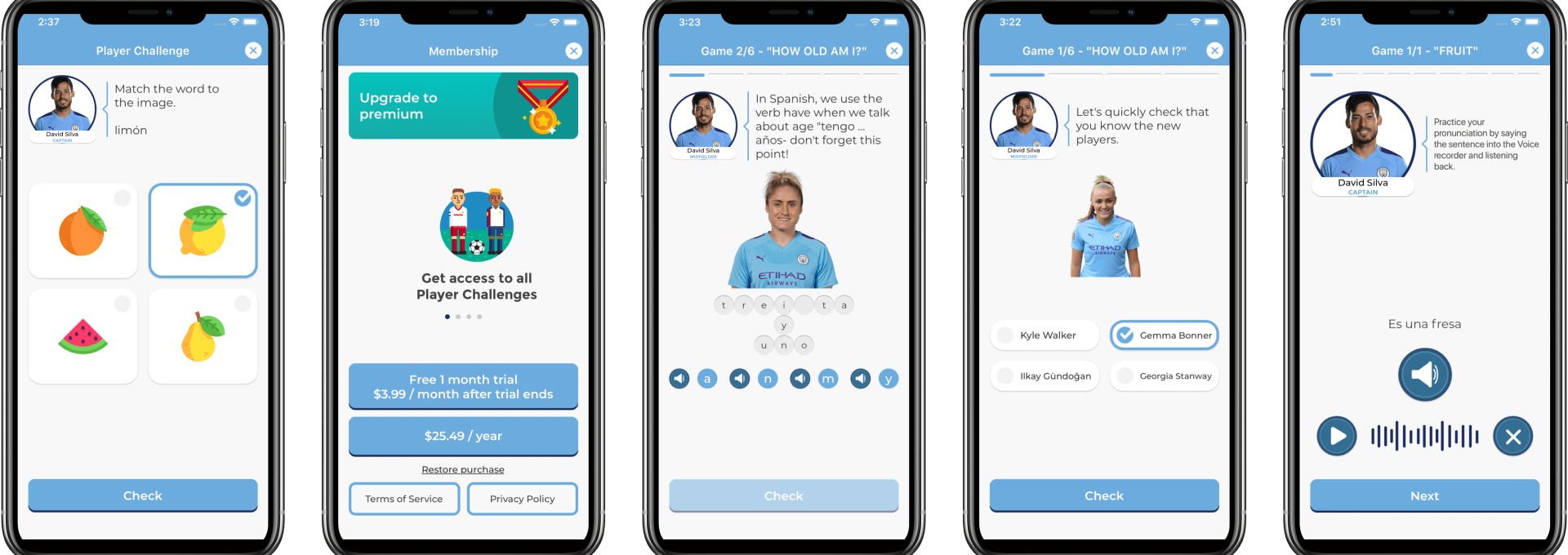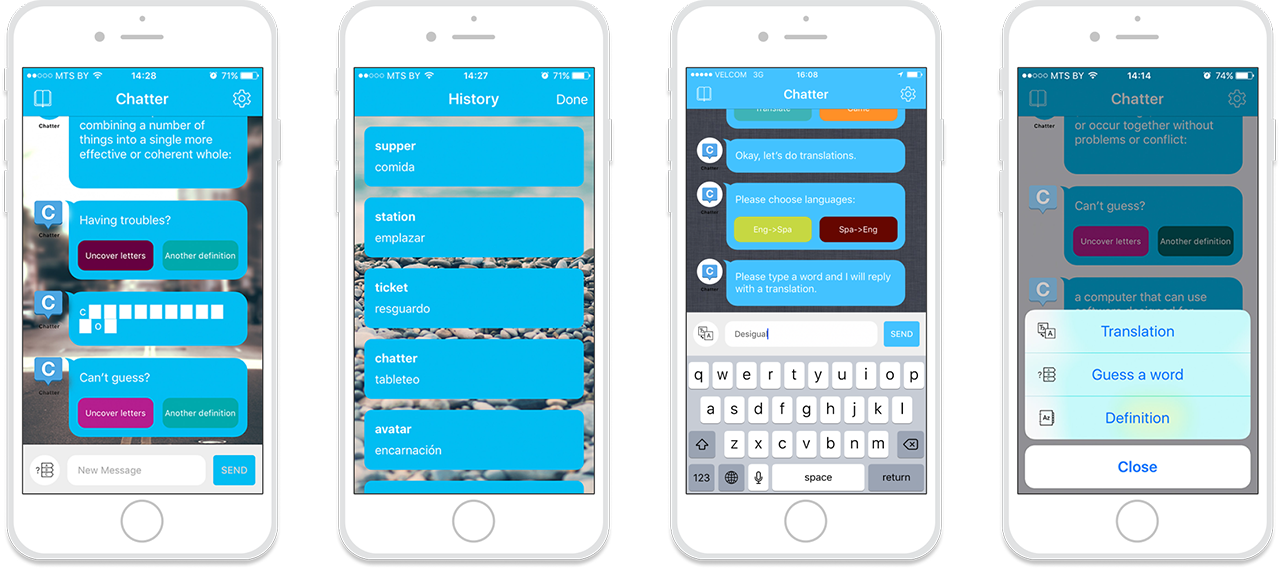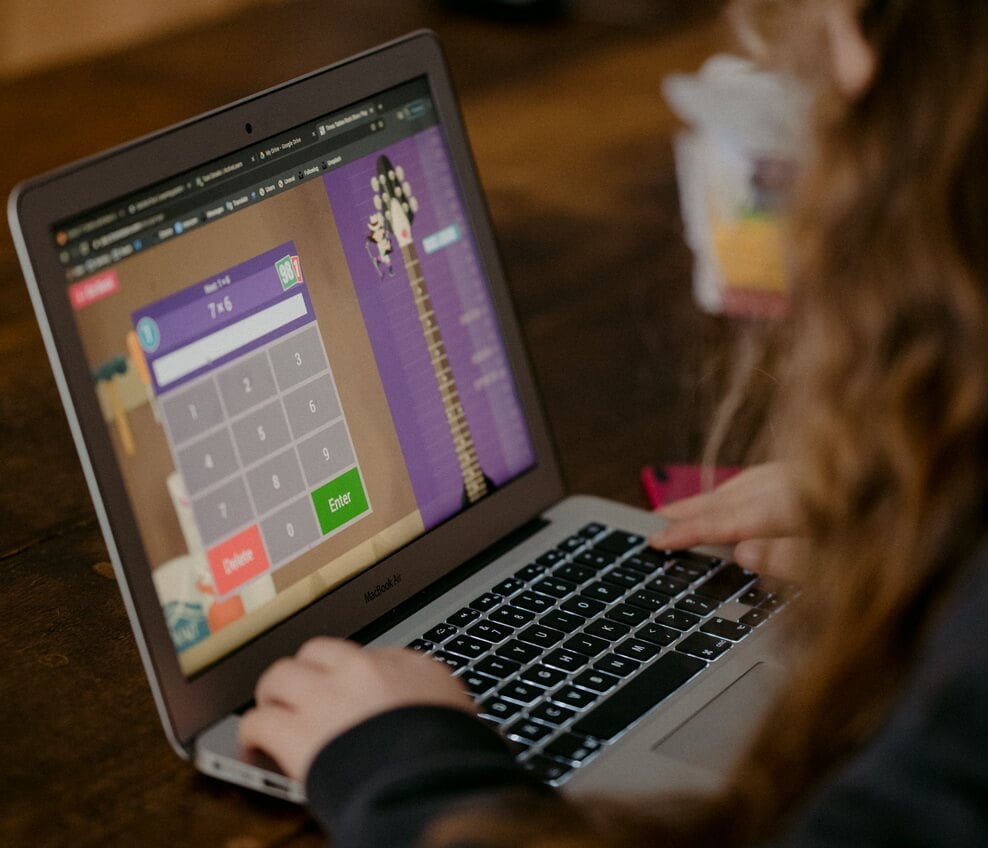5 Benefits of Adding Gamification to Your eLearning System
Who doesn’t like getting rewards for the effort? All eLearning gamification features and elements, eventually, are focused on one goal — reward a learner for taking time and effort to study something, be it an actual reward (points, badges), feeling of achievement (levels, progress bars), winning (leaderboards) or socializing in an unusual and entertaining way (online competition or group quiz).
Gamification is based on people’s behavioral patterns and can directly impact people’s decisions. This is what makes it, by far, one of the most successful techniques in online education and a fast-growing trend in eLearning mobile app development.
In this article, we highlight the 5 ultimate benefits of using the gamification approach in online learning applications and, hopefully, help you figure out if you want to use these techniques in your digital system.

In this article:
- Why gamification and eLearning are such a great match.
- 5 benefits of adding gamification features to your eLearning system.
- Great examples of gamified learning apps.
Why using gamification in eLearning
The definition of gamification in eLearning can partially explain why it’s such an attractive strategy for educational courses and programs. In short, it implies using game-based mechanisms, techniques and aesthetics in a non-game environment (in this case, eLearning) to trigger certain behavioral patterns that benefit the learning process (e.g. participation, competition, achievement, collecting, socializing, etc.).
In other words, adding gamification elements to the educational process is not so much about entertainment. Although, well-made gamified learning is fun. Using gamification for eLearning is a way of applying human-focused design: the programs are built with the specifics of learners’ behavior, motivation, fears and goals in mind.
For example, such features as multiple attempts help students get rid of the fear of failure, encourage them to try again and experiment. Small achievable milestones (quiz, match) vs. unrealistic distant goals (language degree) help learners experience small victories and discourage them from dropping out.
Some of the most frequently-used elements and types of gamification in eLearning (also used for corporate or organization training activities) are progress bars, achievement rewards, currency, leaderboards, and actual games.

There are, in fact, many more benefits of gamification in eLearning. Here are the top 5 to consider if you are building an educational system.
1. Boost motivation with eLearning gamification
67% of students reported that a gamified course was more motivating than a traditional course.
Boosting motivation is, probably, the most evident and attractive benefit of using gamification in eLearning. Different techniques respond to the needs of various categories of learners and help them not only start a program but also to diligently go on with the course and complete it.
- In-app currencies (scores, points) motivate achievers to gather measurable rewards for their effort and further use them along with the progress (unlock exclusive exercises, get tutor help, etc.)
- Levels and leaderboards motivate competitive learners to get the best possible place and, at the same time, master their skills.
- Badges and prizes motivate collectors to complete every task and level to get the whole set of rewards.
- Visualized progress help perfectionists track their record and see self-development.
Important: It’s essential to figure out the personas, their motivations and goals at the idea and design stage of system development to know exactly how and when to use gamification in eLearning applications to bring real value to different audiences.
Example application

Go and Learn with Arsenal and Go and Learn with Man City apps are great examples of gamification in eLearning. Apps publisher, Mudita Sports combined educational science and gamification to create captivating, entertaining and highly motivating apps for learning foreign languages.
The apps are mainly focused on kids who love football. The educational courses are built with multiple features that motivate young football fans to complete the assignments and progress — study the language with their favorite football players as tutors, get rewards, exchange points to exclusive signed player cards, and many more. According to apps reviews, the games keep kids engaged for hours and encourage them to stick to the program.
Learn about gamification in our Case Study: How to create a language learning app.
2. Improve user experience
Another important benefit of using game thinking in online education is improved user experience. Essentially, most people are familiar with the game environment, process and terminology. Depending on the specifics of the used elements, application designers can significantly reduce the learning curve and make a gamified course as easy to navigate as possible.
Moreover, many experts in both education and application development see gamification as a groundbreaking eLearning trend due to the fast feedback associated with gaming. Immediate rewards, progress bars, levels keep the learners updated and ensure a clear understanding of how to go on with the course.
Example application

Chatter is a chatbot that works as a language tutor and helps learners master their language skills with simple gamified exercises. Lessons, quizzes and tasks are provided in the form of a conversation that imitates studying with a real language tutor. Chatbot user experience that mixes habitual texting and simple gaming relies on existing skills and experience of learners and don’t require any time or effort to get used to the application.
Read: Building Dictionary Conversion Framework for Oxford Languages
3. Increase user engagement and retention
Gamification of eLearning is often used with other learning strategies to increase engagement. Micro-learning alone increases engagement by 50%, and this number multiplies when micro-learning is mixed with gamification.
One of the reasons to focus on gamification when creating an educational program is user engagement and retention. It’s not a secret that a lot of people who sign up for a course end up dropping out pretty quickly. Some of the recent statistics show that up to 80% of students who register for online courses drop out.
Using game mechanics to enhance eLearning experience solves the problems of engagement and retention and decreases the number of dropouts. Aside from the most obvious features such as notifications and pop-ups, game-specific elements like dynamic leaderboards, group tournaments and challenges, rewards for timely completion help keep the learners engaged and stick to the course.
Example application
Language learning apps we’ve mentioned earlier reward students with exclusive football content and merchandise such as hi-res posters and signed cards of their favorite football players. These rewards are only available for learners who complete certain tasks or courses. This exclusivity makes application extremely engaging for football fans.
Read: Continuous Integration and Continuous Delivery checklist
4. Use gamification in eLearning to attract users

Features for collaboration, participation, competition and sharing success are the eLearning gamification elements that help publishers attract new users and expand the audience. Even the simplest rating boards, extra points for friend invites and team tournaments make great incentives for existing users to endorse an application and share it among colleagues, peers and friends.
Case Study: Custom lexical software development for Oxford Languages
Example application
Here’s a good example of how a dance teaching app reaches its new audience. Steezy, one of the top dance class applications, introduced its Party feature that allows existing users to invite friends to a virtual party and learn routines together. The feature creates a playful environment where a squad of friends can chat, learn dancing together and have fun at the same time.
5. Discover monetization opportunities with the gamification of eLearning
It is unconventional, but mixing eLearning with gamification can become a good foundation for ROI and an actual source of profit for application publishers.
Apart from standard monetization practices in mobile apps via engaging adds, prime subscriptions, etc., publishers can build in profit centers right into the game flow. For example, one can upsell extra challenges, offer paid group tournaments and team games as well as buy exclusive content instead of winning it.
Monetization could be the basis of a gamification strategy for eLearning or a clever add-on for the applications that show good results and gather an audience.
Example application

One of the top online course generators, Coursera built its business model by offering exclusive combos of courses (specializations) and letting students get actual rewards for completing courses (signature track courses). Additionally, Coursera opened novice B2B courses for business accounts: specialized courses for management, employee training, etc.
Are you interested in adding gamification to your educational system? Or exploring the opportunities on this road? Let’s talk about your ideas!
We have just the right experience in this domain. Our team has already designed and developed several gamification apps for education, including award-winning apps for people with learning difficulties, dementia and Alzheimer’s, highly endorsed mobile apps for learning languages and gamified chatbots powered by Oxford University Press. Learn more about our website development services and our portfolio.




